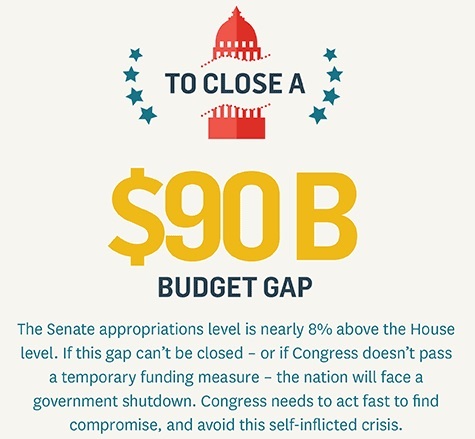The Upcoming Appropriations Showdown
It is now three weeks and counting until the start of FY 2014, when lawmakers will have to pass a bill funding the government or incur a shutdown. With the two chambers $91 billion apart on funding levels, they have some work to do in the next few weeks -- and perhaps in the coming months -- to find a level they are both comfortable with for the year. And with Congress only in session for nine legislative days before the end of the month, they will have to work quickly. A new infographic from the Peterson Foundation shows the to-do list that Congress faces in its limited time in session, including the appropriations process.

A comprehensive agreement would be ideal, but at minimum lawmakers should either find accompanying offsets for a repeal or abide by sequestration levels. To help make sense of the challenges faced by Congress, CRFB has released a new paper, "What We Hope to See from the Government Funding Negotiations," which outlines the state of play and our expectations of how policymakers should handle the situation. In short, the appropriations process is much entwined with the sequester, which accounts for the difference in funding levels between the House and Senate. The sequester does not seem to be politically sustainable since both chambers have put forward plans to violate the caps -- the House on the defense side and the Senate on both sides of the discretionary budget -- so a replacement is greatly needed.
With that said, we've created a grading scale for different scenarios based on their benefits for the debt and the economy. Here is how we would view each approach:

In short, lawmakers can get an A if they pass a plan which solves the long-term fiscal imbalance, and they can still get a passing grade if they at least do no fiscal harm. They will get an F if they add to the debt with a long-term sequester replacement, and they will get an incomplete for any short-term funding solution. Of course, we hope lawmakers have been studying over the August recess so they can pass with flying colors.
Click here to read the full report.

